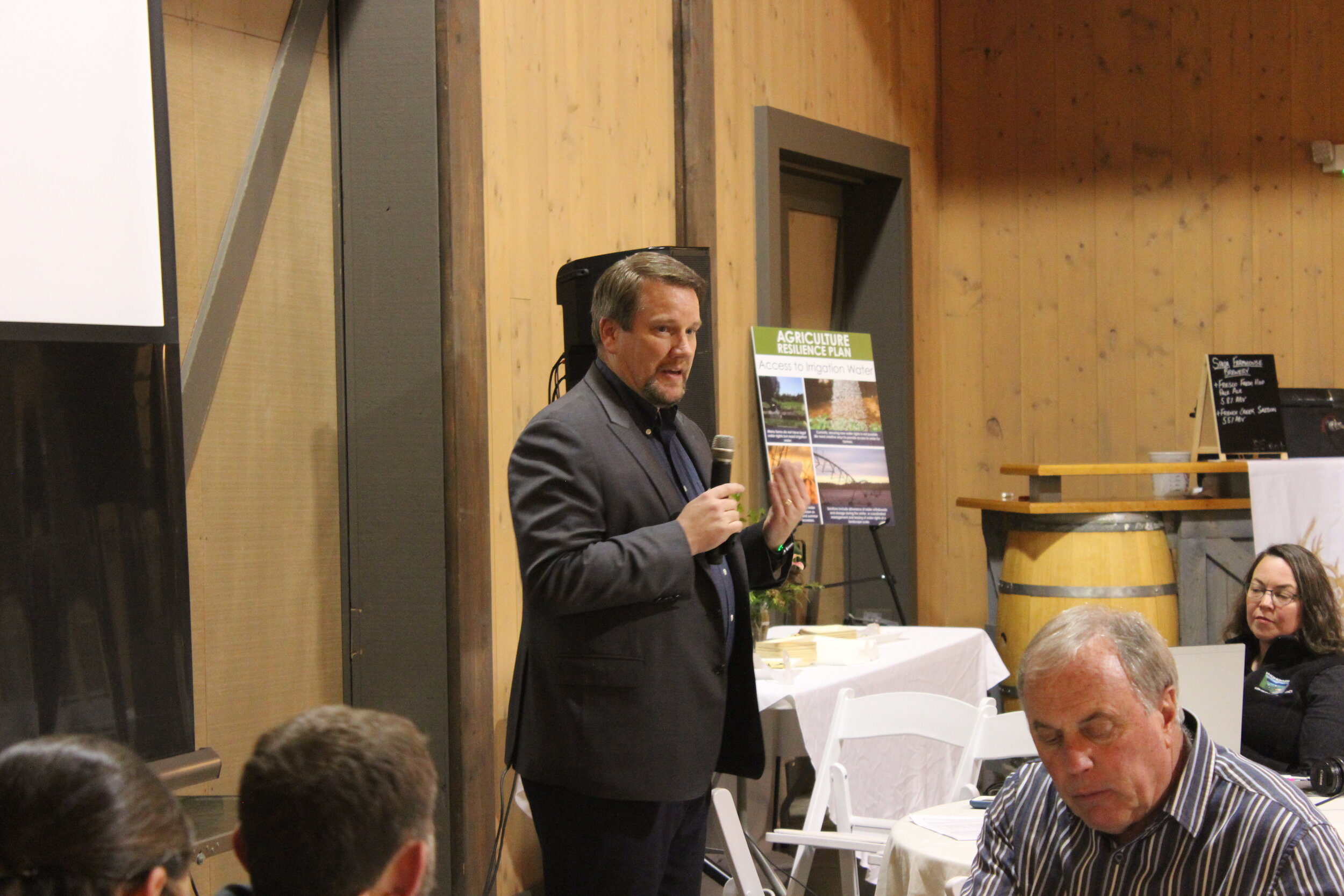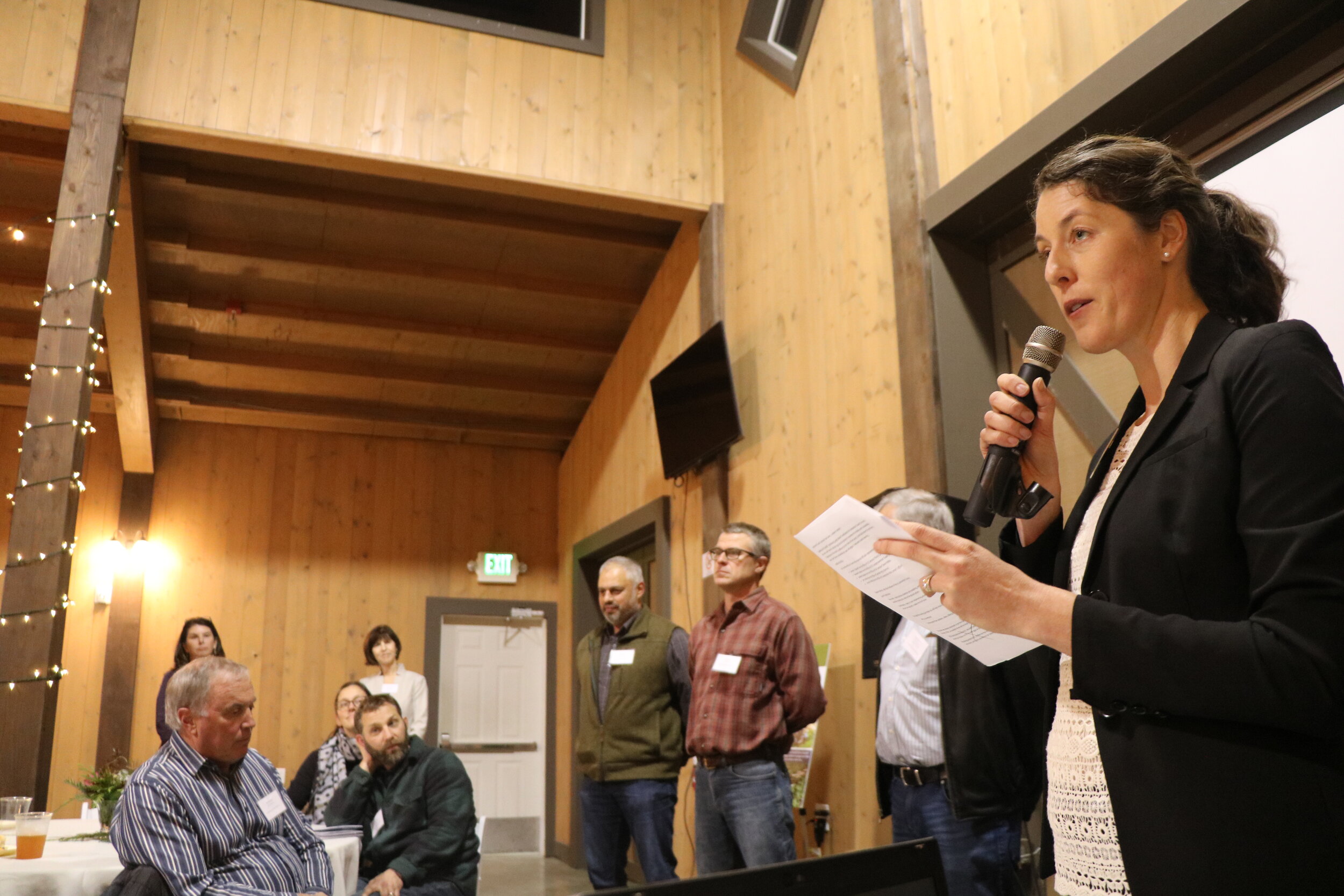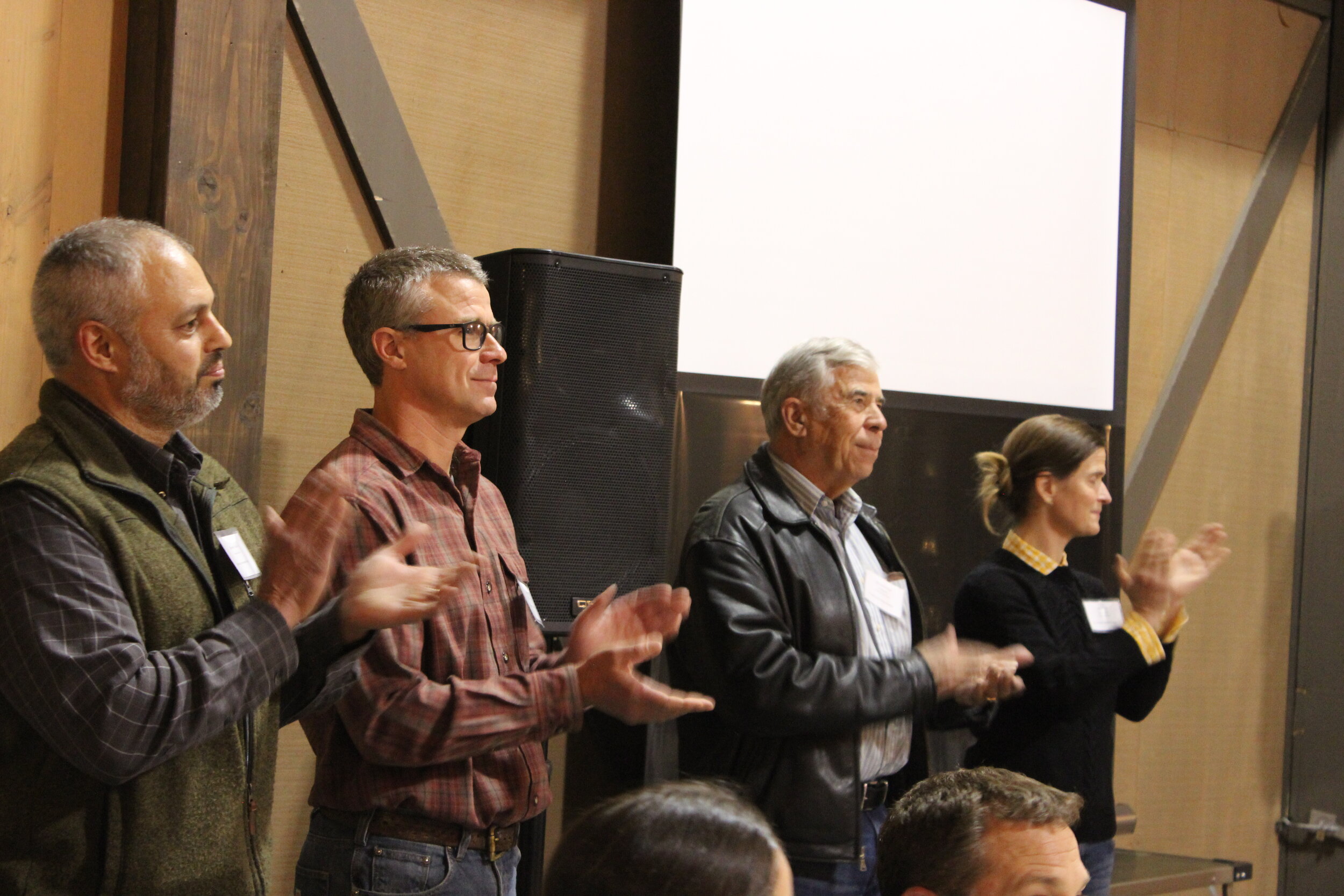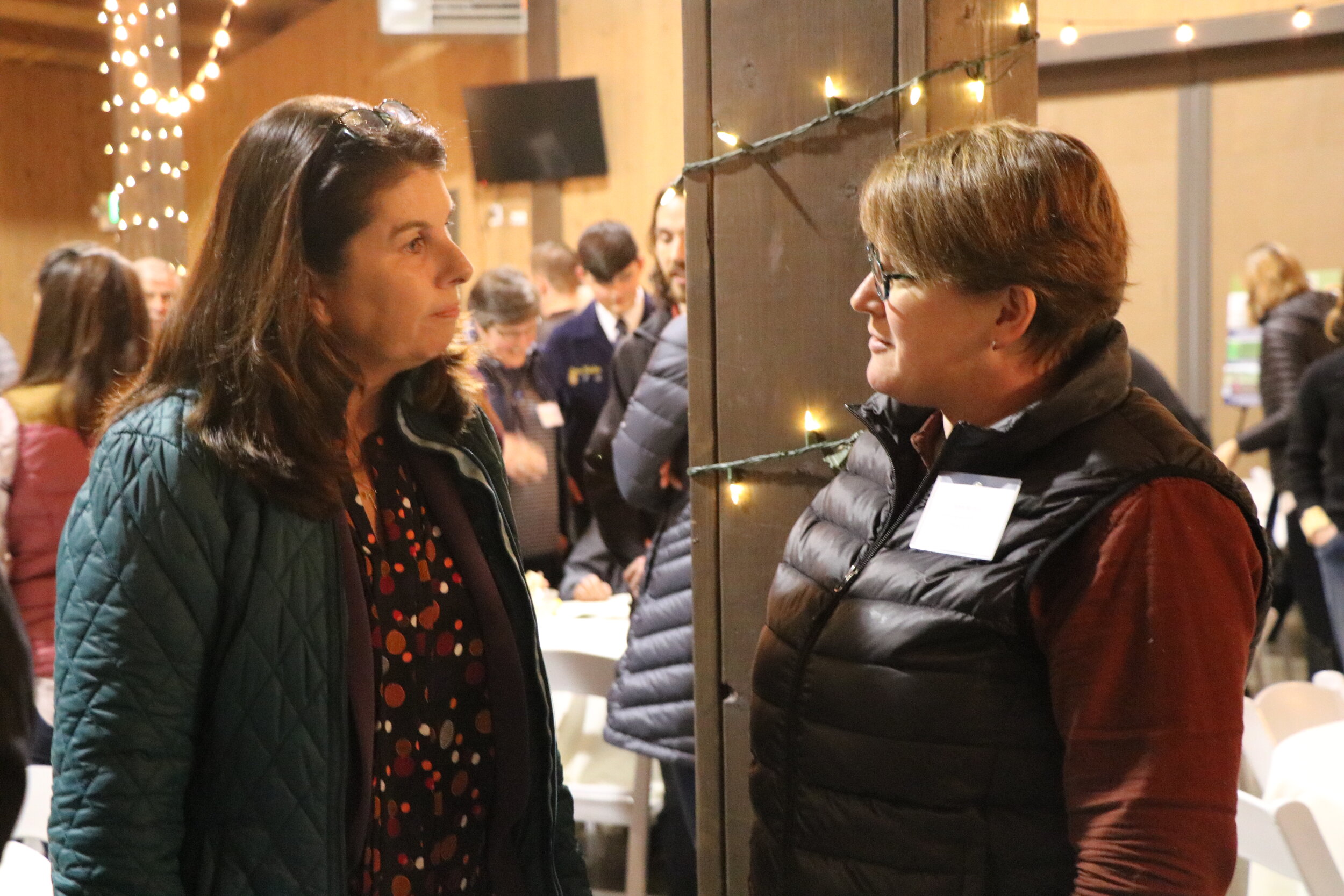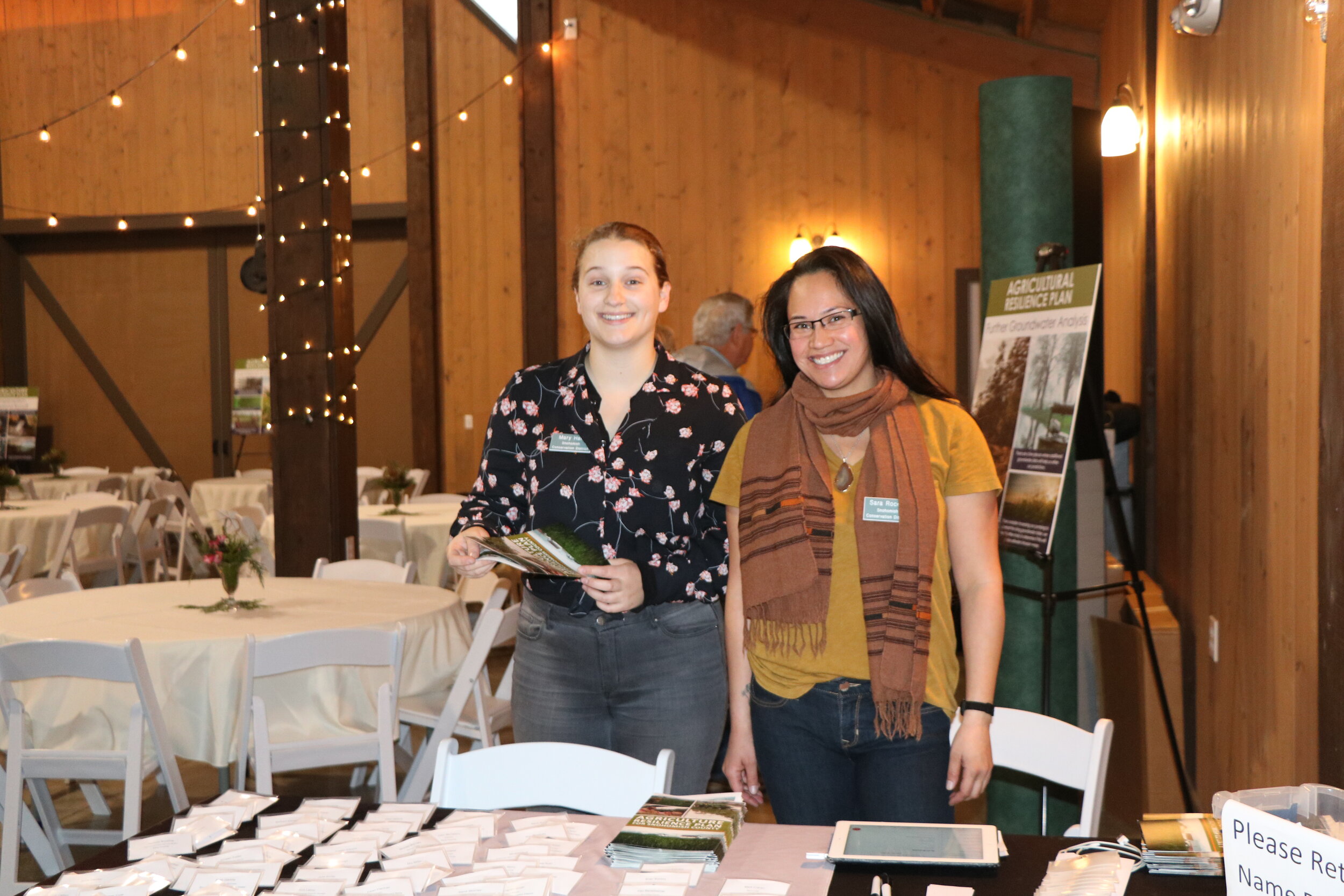Launching Agriculture Resilience into Action
/Snohomish County is changing for farmers.
As one of the fastest growing counties in Washington State, rising population means more developments, houses and shopping centers in place of what used to be farm and forestland. Rising property costs and taxes are also an ever-tightening band across landowners and food producers.
This is why Snohomish Conservation District, in partnership with local farmers, created the Agriculture Resilience Plan. The Plan was completed late this year, and SCD and partners officially celebrated its launch on December 5 at Carleton Farms.
Nichlos Pate was one of the attendees and speakers of the night. He owns Raising Cane Ranch, a small, organic 40-acre farm located on the Snohomish River where his family grows berries, apples, hay and raises a small herd of beef cattle.
“Farmers keep working to protect their property, profession and livelihood while producing food for people. This is agriculture resilience,” Pate said. “It is already underway and implemented, but it needs our help to remain viable in the future.”
The Plan acts as a resource to help farmers plan for a future with both drier and wetter climates, as well as challenges that come with an ever-increasing population. It advocates for preserving farmland and greenspace that can act as both a buffer and balance to the sprawling suburbs that are quickly sprouting up.
Extensive research and testing was put into developing an accurate reflection of county agriculture needs. Local farmers helped compile the most pressing needs of the farming community and outlined current farming techniques and infrastructure.
Most challenges farmers are currently facing come in the form of water- too much of it, and too little. The winter brings with it flooding and drainage issues, and the summer heralds in a period of drought and not enough water for irrigation. If you’re interested in projected changes in temperature, growing seasons and precipitation, try Washington State University’s Climate Visualization Tool.
What’s Next
Now that the Agriculture Plan is completed, the next step is implementation. The Sustainable Lands Strategy (SLS) has already opened the door for the agriculture community to sit at the table of other floodplain efforts like salmon recovery and urban development. Established in 2010, the SLS intent is to create a mutually beneficial relationship between fish, farm and flood management organizations.
By working together with the goals highlighted in the Plan, the agriculture community and partners can move towards securing funding and regulatory efficiencies. A project list is constantly adapting to reflect the changing needs of the agriculture community and the collaborative process facilitated by the SLS to develop innovative, landscape-scale solutions to community resilience.
Visit www.snohomishcd.org/ag-resilience to learn more about this project, access the full Plan, or subscribe to the quarterly e-newsletter. To learn more about projected impacts to your farm or how you can get involved, contact blafond@snohomishcd.org or bobbi@snohomishcd.org.

